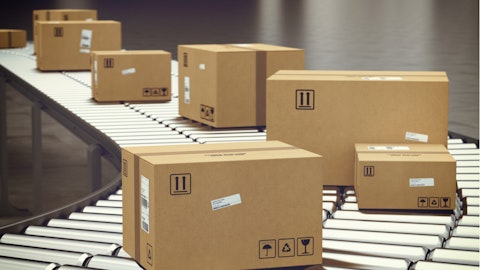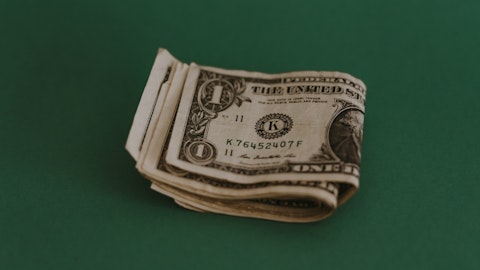Mark Kowlzan: Yes. Mark, just remember back in 2008 into the 2009 period, we saw a more rapid downturn in volume than our competitors. And then when we started seeing the improvement in the spring, we came back stronger and faster than our competitors. And I believe most of that has to do with the predominantly local book specialized local accounts, smaller local account business that we have. These accounts are much more tuned into what’s happening with their own business. They can move very quickly. They’re very nimble. But I’m going to let Tom elaborate on that because, again, it’s not as simple as it seems.
Thomas Hassfurther: Yes, Mark. I think that the — one of the things that I think is really important is, number 1 is we haven’t lost any volume. So we’re not losing any market share. That’s not taking place. But if you think about the thing that we’ve talked about many times and we take great pride in is the broad base of business that we have and the broad base of sectors that we deal across. Now in this particular — during COVID, we had some of those sectors were up as much as 200%. And once COVID ended, of course, those are going to be down significantly. So it just depends on the sector. And that’s why we’ve had to sort through this volume situation a little longer than what we would have hoped. But — you do have a lot of these — some of these various sectors are down significantly.
Some of them have stayed level, some of them are up slightly. But for the most part, that’s the biggest factor. The other thing that we did during COVID is we had to run a lot of business that we could not get supplied from the outside, which we traditionally would have done. And we now have that business placed back on the outside again. So even though we keep the revenue and we keep the income, it’s a drag on our volume. And that’s just kind of funny math, if you will, based on the way it has to be reported to the FBA, but that’s another factor that’s affecting us. Does that help?
Mark Weintraub: It does. Just 2 quick follow-ups. One is you mentioned not lost volume — were you basically think you haven’t lost customers, obviously, your volumes are down?
Thomas Hassfurther: We haven’t lost any customers in terms of what you would call market share in terms of customers or things like that. Obviously, our volume is down. But it’s down. We haven’t lost any share within those accounts or anything like that. It’s just that some of that broad-based business, some of those sectors are down significantly. And as I mentioned, we’ve never had a period where we got hit with ag getting hit like it did in the regions where we have big footprints all at the same time.
Mark Weintraub: Got it. And then just maybe a little bit of clarification. Why would you — given that demand has been weak and you certainly have the capability to have fulfilled needs, which maybe were being fulfilled from the outside and now apparently, you’re fulfilling from the outside. I guess I’m a little puzzled why you would, given you’ve got plenty of capability, I would think, to meet it internally or maybe I don’t understand exactly.
Thomas Hassfurther: Well, the reason is because we have to produce that at a much higher cost than we can get done on the outside. And so it doesn’t make sense for us to do that. But in order to take care of our customers, we opted to do it at a much higher cost point. So that’s why we’re doing it. And of course, we want to maintain the — run our plants as efficiently as we possibly can. So it’s just from a cost standpoint makes the most sense.
Operator: Our next question comes from Phil Ng from Jefferies.
Unidentified Analyst: This is John on for Phil. Appreciate all the details. And I want to first start off asking how much economic downtime you guys took in 1Q given the last couple of quarters, you’ve called that out, and it’s been a bit outsized. Is that something you can quantify? And maybe how can we think about trends for that in 2Q with some of the demand starting to normalize?
Robert Mundy: Yes. It was about 110,000 tons in the first quarter.
Unidentified Analyst: Okay. And any insights on how to think about 2Q?





